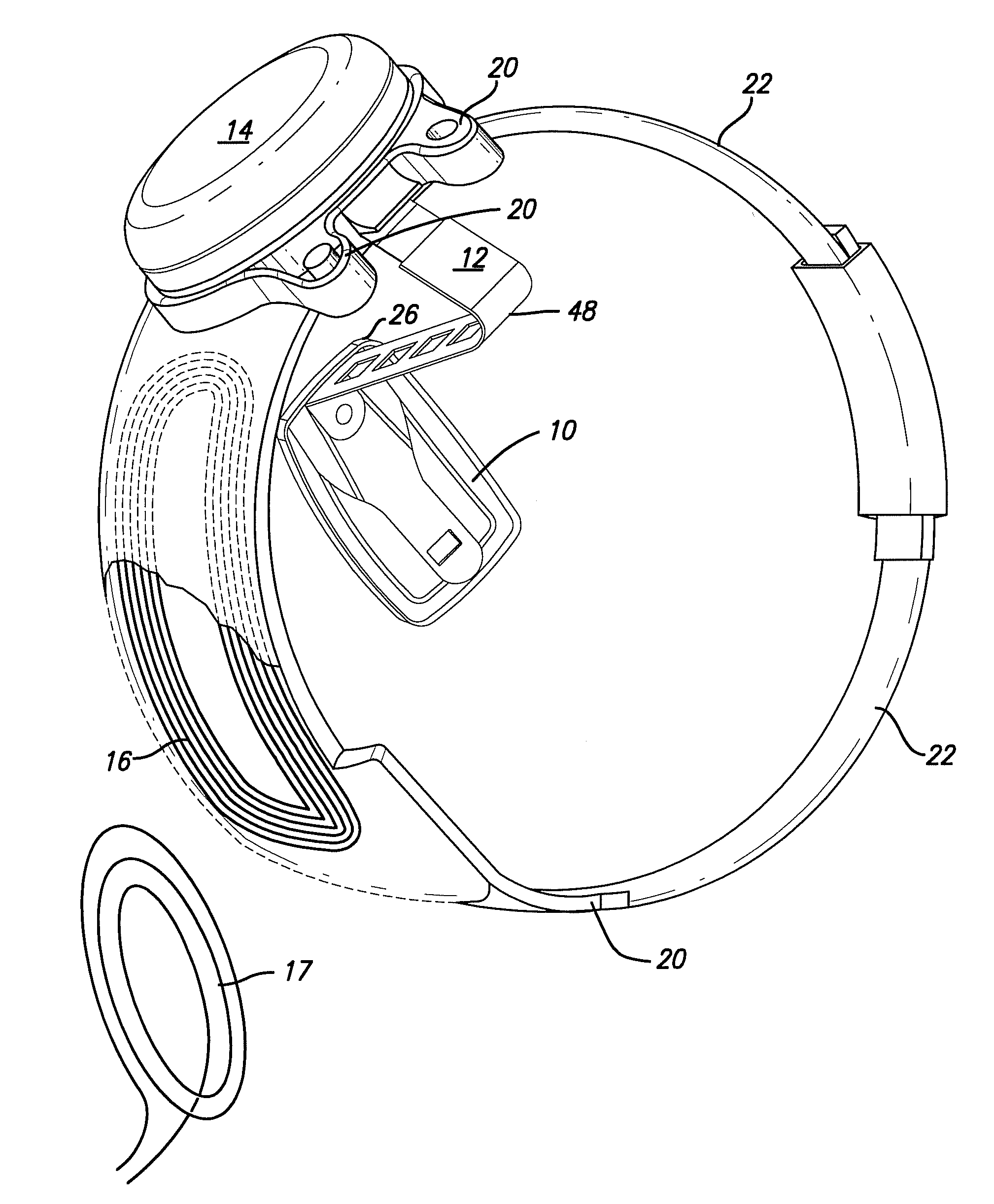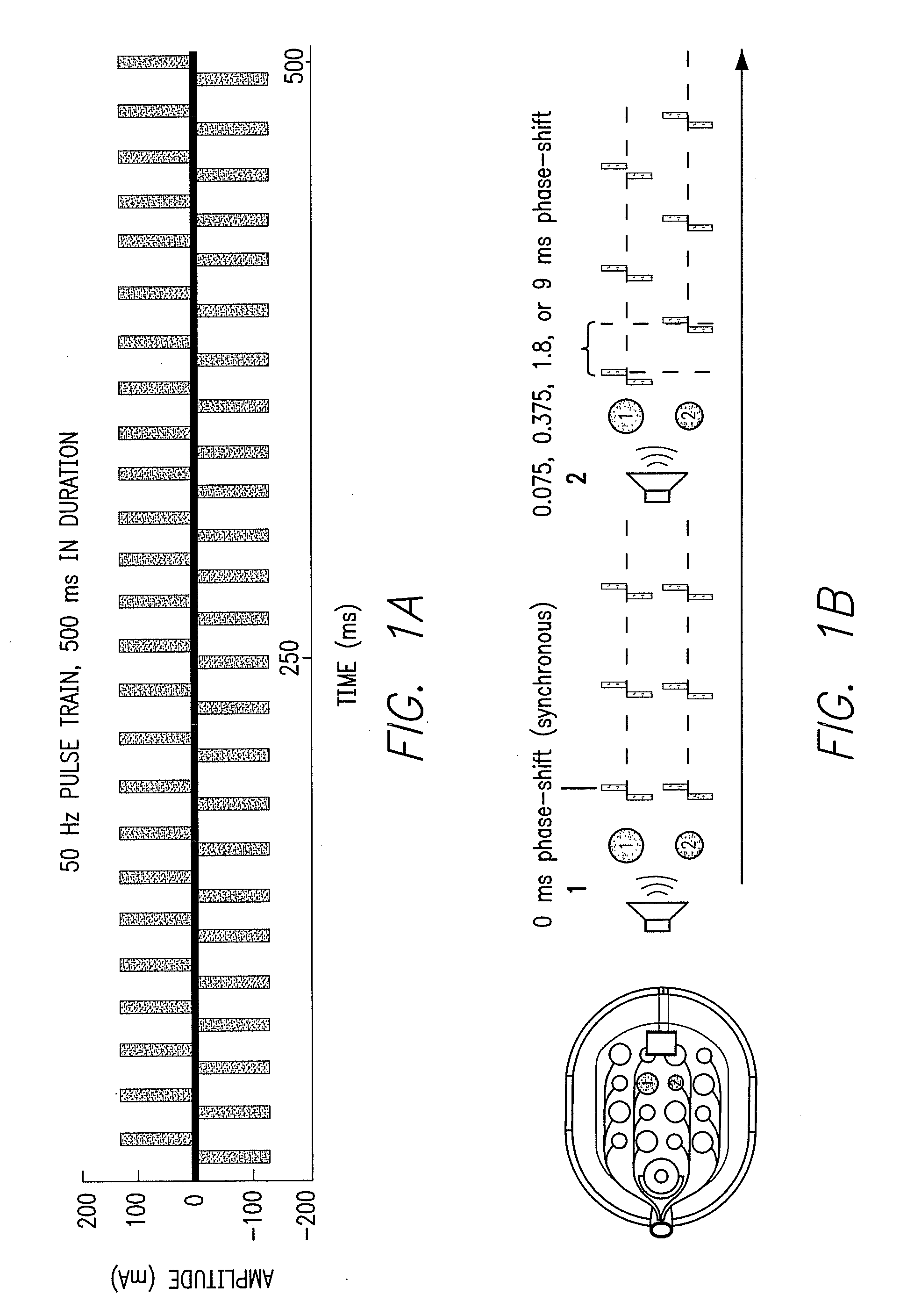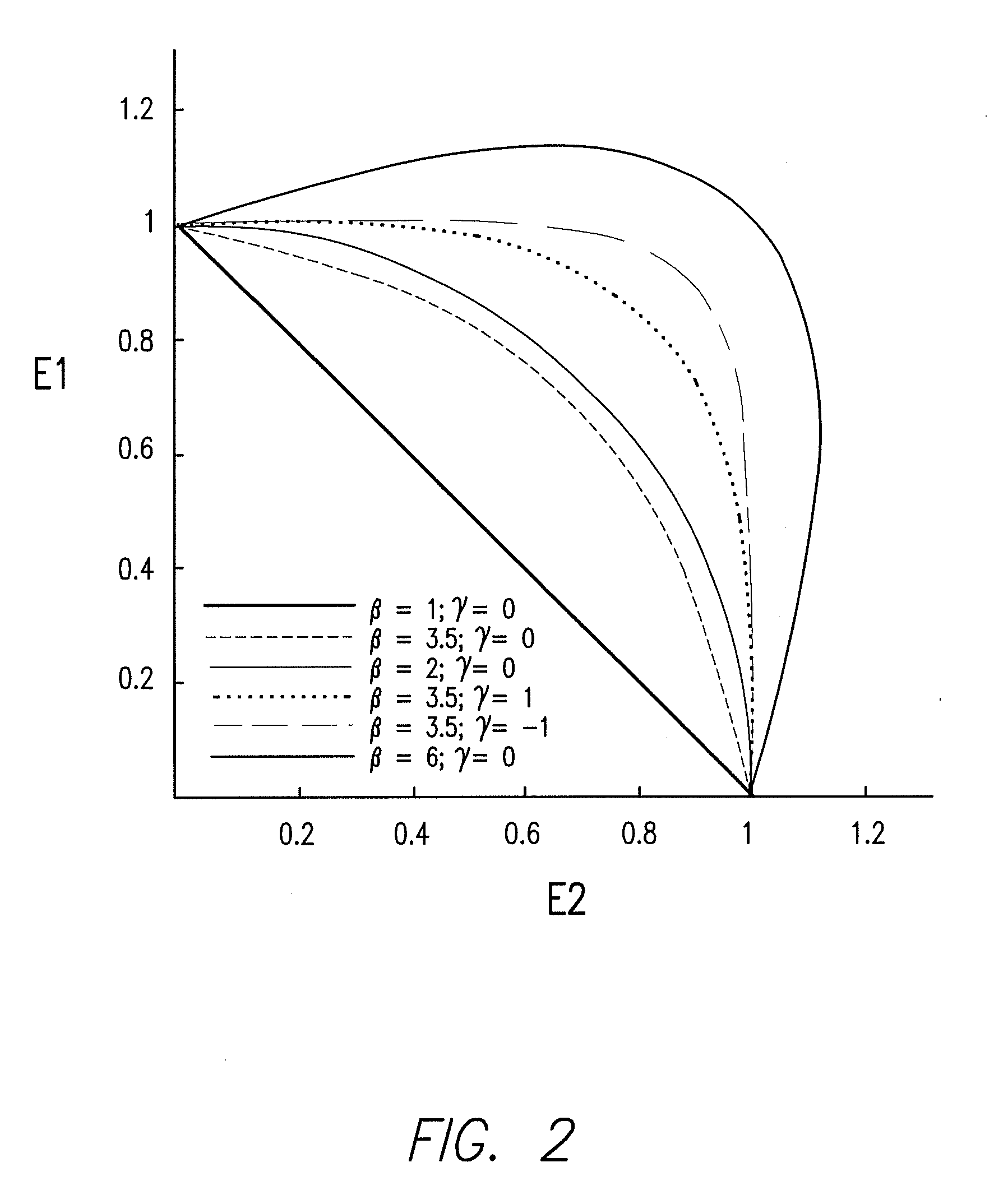Multi-Electrode Integration in a Visual Prosthesis
- Summary
- Abstract
- Description
- Claims
- Application Information
AI Technical Summary
Benefits of technology
Problems solved by technology
Method used
Image
Examples
Embodiment Construction
[0028]Methods: Subjects compared the brightness of a standard stimulus (where pulse trains across pairs of electrodes were synchronously presented) to the brightness of test stimuli (where pulse trains were phase-shifted by 0.075, 0.375, 1.8, or 9 ms). We measured the amount of total charge for each phase-shifted stimulus needed to make the test and the standard of equal brightness.
[0029]Results: Depending on the electrode pair, interactions between electrodes could be either facilitatory (the amount of charge need to match the brightness of the standard summed across electrodes) or suppressive (more charge was needed to match the brightness of the standard than would be required for either individual electrode alone). Data were fit with a simple, 2-parameter model. The amount of interaction between electrodes decreased both as a function of increasing time (phase-shift between pulse trains) and space (center-to-center distance between the electrode pair).
[0030]Conclusions: During m...
PUM
 Login to View More
Login to View More Abstract
Description
Claims
Application Information
 Login to View More
Login to View More - R&D
- Intellectual Property
- Life Sciences
- Materials
- Tech Scout
- Unparalleled Data Quality
- Higher Quality Content
- 60% Fewer Hallucinations
Browse by: Latest US Patents, China's latest patents, Technical Efficacy Thesaurus, Application Domain, Technology Topic, Popular Technical Reports.
© 2025 PatSnap. All rights reserved.Legal|Privacy policy|Modern Slavery Act Transparency Statement|Sitemap|About US| Contact US: help@patsnap.com



